01第一节 知识点
我们通过定时器0的讲解来实现多个定时器的定时功能。
(1)Timer0 模块具有以下特征:
• 可通过软件选择,作为8 位或16 位定时器/ 计数器
• 可读写的寄存器
• 专用的8 位软件可编程预分频器
• 可选的时钟源(内部或外部)
• 外部时钟的边沿选择
• 溢出中断
(2)TImer0工作原理
Timer0 既可用作定时器亦可用作计数器;具体的模式由TOCS 位(T0CON<5>)选择。在定时器模式下(T0CS = 0),除非选择了不同的预分频值,否则,默认情况下在每个时钟周期该模块的计时都会递增(见第11.3 节“预分频器”)。如果写入TMR0 寄存器,那么在随后的两个指令周期内,计时将不再递增。用户可通过将校正后的值写入TMR0 寄存器来解决上述问题。通过将T0CS 位置1 选择计数器模式。在计数器模式下, Timer0 可在RA4/T0CKI 引脚信号的每个上升沿或下降沿递增。触发递增的边沿由Timer0 时钟源边沿选择位T0SE (T0CON<4>)决定。清零此位选择上升沿递增。下面讨论外部时钟输入的限制条件。可以使用外部时钟源来驱动Timer0。但是必须确保外部时钟与内部时(TOSC)相位同步。在同步之后,定时器/ 计数器仍需要一定的延时才会引发递增操作。
(3) 中断
当TMR0 寄存器发生溢出时(8 位模式下,从FFh 到00h ;或16 位模式下,从FFFFh 到0000h),将产生TMR0 中断。这种溢出会将标志位TMR0IF 置1。可以通过清零TMR0IE 位(INTCON<5>)来屏蔽此中断。在重新允许该中断前,必须在中断服务程序中用软件清
零TMR0IF 位。由于Timer0 在休眠模式下是关闭的,所以TMR0 中断无法将处理器从休眠状态唤醒。
(4) 定时器的时钟选择内部FOSC/4;
定时器的初值为0的话,8位模式, 一次中断的时间为(1/(FOSC/4)256; 如果定时1s 中断的计数值为n=1/((1/(FOSC/4)256);
eg: FOSC=40MHz 1s定时n=39063
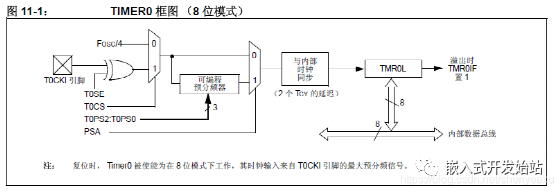
02第二节 软件设计
我们新建一个关于定时器的头文件和一个源文件
(1) timer_config.h
/*
* File: timer_config.h
* Author: Greg
* Comments: 定时器的配置和初始化程序
* Revision history: version 1.1
*/
// This is a guard condition so that contents of this file are not included
// more than once.
#ifndef _TIMER_CONFIG_H_
#define _TIMER_CONFIG_H_
#include // include processor files - each processor file is guarded.
extern unsigned int timer0num=0;
extern unsigned int timer1num=0;
extern unsigned int timer2num=0;
void timer0_config_init(void);
void tiner1_config_init(void);
void timer2_config_init(void);
void timer3_config_init(void);
#endif /* _TIMER_CONFIG_H_ */
(2)timer_config.c
#include "timer_config.h"
void timer0_config_init(void)
{ //没有预分频,可以预分频
TMR0ON=1; // enable timer0
T08BIT=1; // 8bit model
T0CS=0; //clock is selected by internal clko
PSA=1; // 未经分频器
// 中断timer0 使能
TMR0IE=0; // timer0 允许中断
TMR0IF=0; // 中断标志位清零
TMR0L=0; // 初值为0
}
void tiner1_config_init(void)
{ //没有预分频,可以预分频
T1CONbits.RD16=1;// 16位操作
T1RUN=0;// 时钟由时钟源产生
T1OSCEN=0;
TMR1CS=0;// 内部时钟 Fosc/4
TMR1ON=1;// timer1 使能
TMR1IE=0;// timer1 允许中断
TMR1IF=0;
TMR1=0; //timer1 初值
}
void timer2_config_init(void)
{
T2CONbits.TMR2ON=1;// timer2使能
T2CONbits.T2CKPS=0b00; //预分频值为1
T2CONbits.T2OUTPS=0b0000; //timer2输出后分频为1
TMR2=0; //timer2 初值W为0;
PR2=0xFF;// tiner2 周期寄存器的值设置为256;TMR2的值和PR2的值相等时是TMR2IF为1;
TMR2IE=0;// timer2允许中断
TMR2IF=0;
}
void timer3_config_init(void)
{
T3CONbits.RD16=1;// 16位操作
T3CONbits.T3CKPS=0b00;// 预分频
T3CONbits.T3SYNC=1;// 不与外部时钟同步
T3CONbits.TMR3CS=0;// 内部时钟
T3CONbits.TMR3ON=1;// timer3使能
TMR3=0; //timer3 初值
TMR3IE=1;// timer3允许中断
TMR3IF=0;
}
再新建两个关于中断的头文件和源文件
(3)inrt_config.h
// This is a guard condition so that contents of this file are not included
// more than once.
#ifndef _INRT_CONFIG_H_
#define _INRT_CONFIG_H_
#include // include processor files - each processor file is guarded.
#include "usart_dr.h"
void interrupt_config_init(void);
// 高级优先级中断服务子程序 声明
void interrupt high_priority inrt_isr_high(void);
//低级中断服务子程序 声明
void interrupt low_priority inrt_isr_low(void);
#endif /* _INRT_CONFIG_H_ */
(4)inrt_config.c
#include"timer_config.h"
#include "inrt_config.h"
void interrupt_config_init(void)
{
INTCONbits.GIE=1;//允许全局中断
INTCONbits.PEIE=1;// 允许外设中断
RCONbits.IPEN=1; // 中断优先级使能位
RCIE=1; //USART中断使能
RCIP=1; // USART中断优先级高
RCIF=0;
TMR0IP=1;// timer0 设置为高级优先中断
TMR1IP=1; //timer1 设置为高级优先级中断
TMR2IP=1; //timer2 设置为高级优先级中断
TMR3IP=1; //timer3 设置为高级优先级中断
}
// 高级优先级中断服务子程序
void interrupt high_priority inrt_isr_high(void)
{ //usart 服务
if(RCIF&&RCIE)
{
RCIF=0; // 必须先清楚RC中断标志位
usart_send_byte(RCREG);
}
//timer 0 服务
if(TMR0IE&&TMR0IF)
{
TMR0IF=0;
timer0num++;
if(timer0num==39063)
{
usart_send_string("timer0 is count for 1s!rtn");
timer0num=0;
}
}
//timer 1 服务
if(TMR1IE&&TMR1IF)
{ // 在这里定时器的初值在初始化设置为0,因此不需要再赋初值
TMR1IF=0;
timer1num++;
if(timer1num==305) //16bits
{
usart_send_string("timer1 is count for 2s!rtn");
timer1num=0;
}
}
if(TMR2IE&&TMR2IF)
{ // 在这里定时器的初值在初始化设置为0,因此不需要再赋初值
TMR2IF=0;
timer2num++;
if(timer2num==39063)
{
usart_send_string("timer2 is count for 1s!rtn");
timer2num=0;
}
}
//timer3 服务
if(TMR3IE&&TMR3IF)
{ // 在这里定时器的初值在初始化设置为0,因此不需要再赋初值
TMR3IF=0;
timer1num++;
if(timer1num==458)//3s 16bits
{
usart_send_string("timer3 is count for 3s!rtn");
timer1num=0;
}
}
}
// 低级中断服务程序由此处书写
void interrupt low_priority inrt_isr_low(void)
{
;
}
现在具体的定时器和中断的配置已经完成了,我们在主函数中使用:
注意:我们配置字没有修改,默认前期教程的。
#include "usart_dr.h"
#include "inrt_config.h"
#include "timer_config.h"
//#include"plib/adc.h"
//#include "delays.h"
int main(void)
{
usart_port_dir_init();
usart_Config_init();
interrupt_config_init();
timer0_config_init();
tiner1_config_init();
timer2_config_init();
timer3_config_init();
usart_send_string("I love you!");
while(1)
{
}
return 0;
}
下载到开发板中测试吧,我已经测试过没有问题。
 电子发烧友App
电子发烧友App









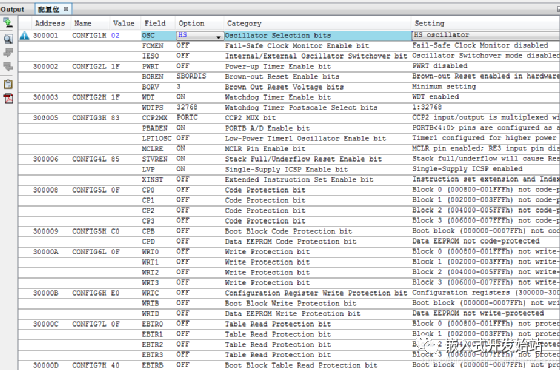

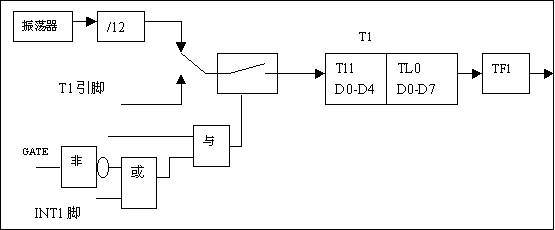

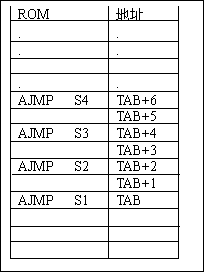
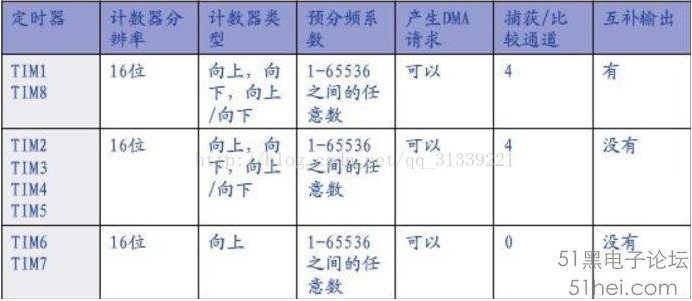
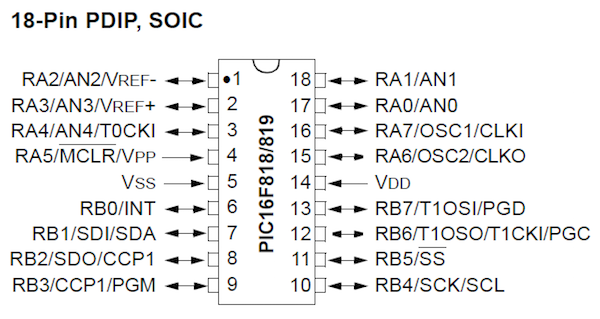










评论